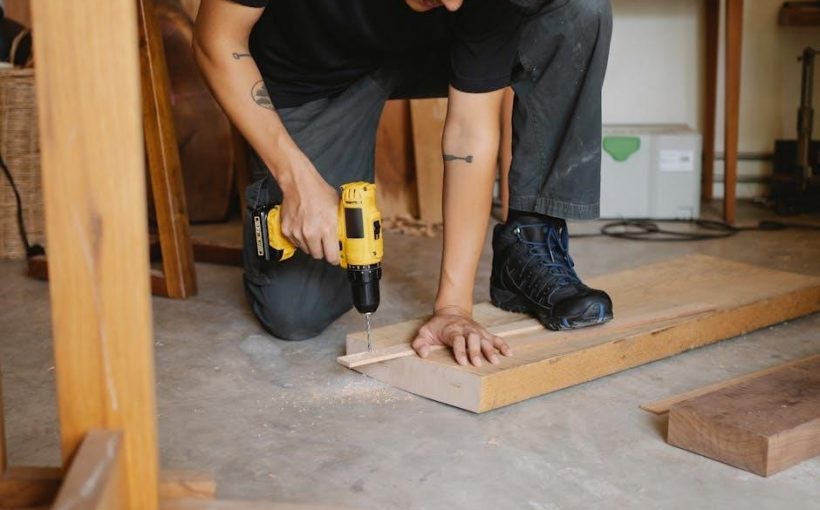The TEM6 Installation Manual provides essential guidelines for installing and maintaining your TEM6 series air handler, designed for air conditioning and heat pump applications in various spaces․
1․1 Overview of the TEM6 Series Air Handler
The TEM6 Series Air Handler is a versatile and efficient HVAC solution designed for both air conditioning and heat pump applications․ It is suitable for installation in various residential settings, including closets, utility rooms, basements, crawlspaces, and attics․ The unit offers flexibility with convertible configurations, allowing it to adapt to different space requirements․ Multiple models are available to meet specific outdoor equipment needs, ensuring compatibility and optimal performance․ The TEM6 series is known for its reliability, energy efficiency, and quiet operation, making it a popular choice for homeowners seeking a durable and high-performance air handling system․ Its design ensures ease of installation and maintenance, while also providing consistent indoor air quality․
1․2 Importance of Proper Installation
Proper installation of the TEM6 Series Air Handler is critical to ensure safety, efficiency, and optimal performance․ Improper installation can lead to hazards, reduced system efficiency, and potential voidance of the manufacturer’s warranty․ Correct installation ensures compliance with safety standards and manufacturer recommendations, minimizing risks of accidents or system malfunctions․ It also guarantees energy efficiency, consistent indoor air quality, and reliable operation․ Proper installation by qualified personnel is essential to maintain the unit’s performance and longevity, as outlined in the manual․ Always follow the guidelines to ensure a safe and efficient setup, avoiding costly repairs and ensuring compliance with local regulations and manufacturer specifications․
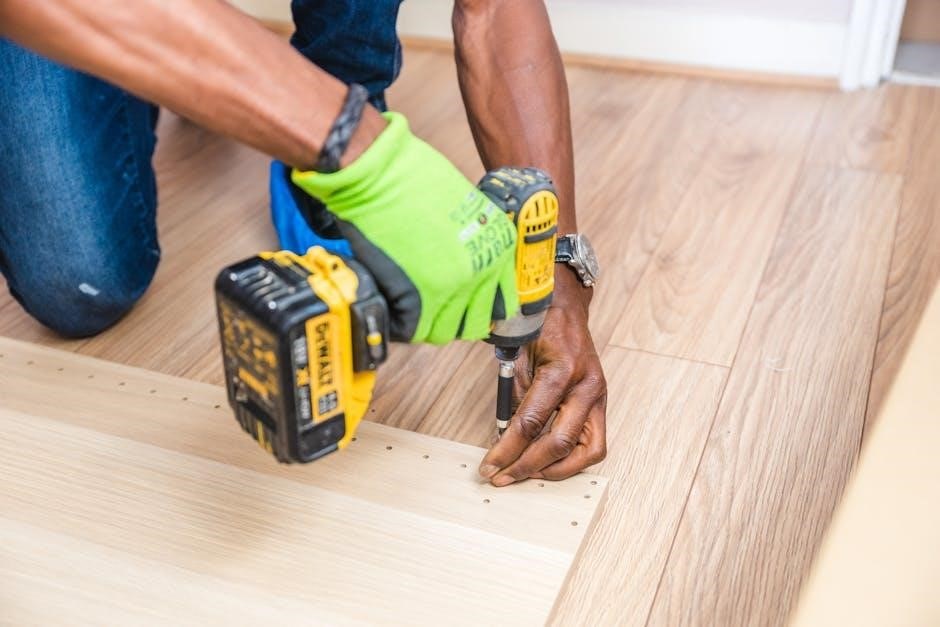
1․3 Safety Precautions and Warnings
Safety precautions are critical when installing the TEM6 Series Air Handler to prevent accidents and ensure proper functionality․ Always follow the manufacturer’s guidelines and local safety regulations․ Handling the unit with care is essential to avoid damage and personal injury․ Proper grounding of the electrical system is mandatory to prevent electrical hazards․ Wear protective gear, including gloves and safety glasses, when handling sharp edges or electrical components․ Ensure the area is well-ventilated and free from flammable materials․ Never attempt installation without proper training or qualifications, as improper procedures can lead to serious injury or death․ Adhere strictly to the safety warnings and instructions provided in the manual to guarantee a safe and successful installation process․
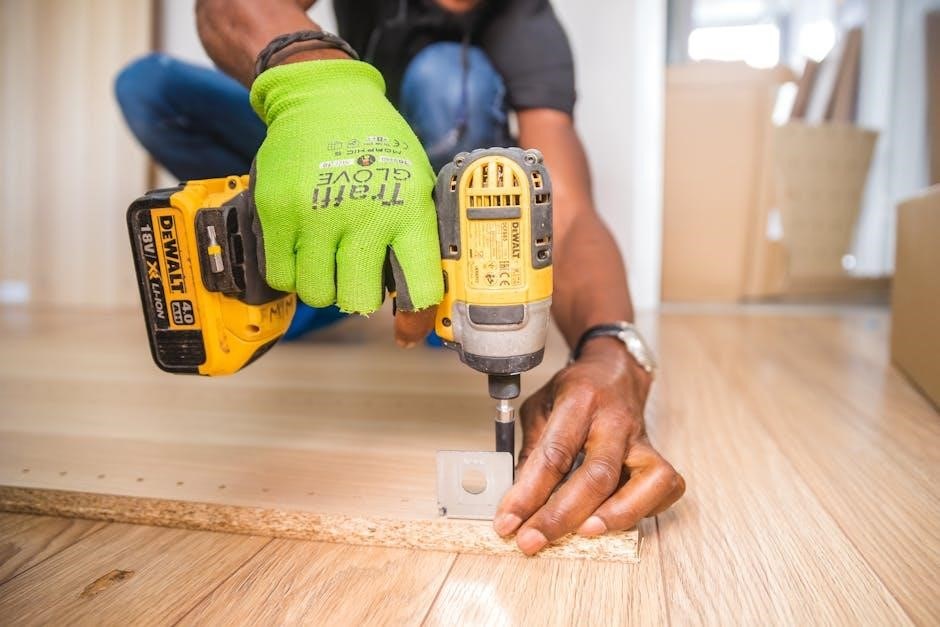
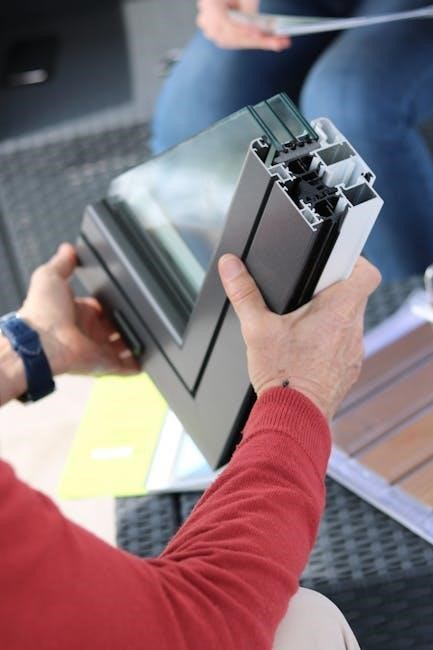
Pre-Installation Checklist
Verify model and serial number, check for damage, ensure all accessories are included, review site requirements, and confirm tools and materials are ready for installation․
2․1 Site Selection and Location Requirements
Selecting the right location for your TEM6 air handler is crucial for optimal performance and safety․ Ensure the site is dry, well-ventilated, and accessible for maintenance․ Avoid areas prone to flooding or excessive moisture․ The air handler can be installed in a closet, utility room, alcove, basement, crawlspace, or attic, provided there is adequate space for proper airflow and service access․ Verify that the location complies with local building codes and regulations․ Ensure the floor is level and sturdy enough to support the unit’s weight․ Proper drainage and electrical connections must also be considered․ Always follow manufacturer recommendations for placement to ensure safe and efficient operation․
2․2 Unpacking and Inspecting the Unit
Carefully unpack the TEM6 air handler to avoid damage․ Inspect the unit for any signs of shipping damage, such as dents, scratches, or bent components․ Verify that all components, including electrical connections, filters, and accessories, are included and undamaged․ Check for any signs of wear or corrosion on coils, fans, or other internal parts․ Ensure the unit is clean and free from debris before proceeding with installation․ If any damage is found, contact the manufacturer or supplier immediately․ Only qualified personnel should handle the equipment to ensure safety and proper inspection․ This step is critical to ensure the air handler operates efficiently and safely after installation․
2․3 Verifying Model and Serial Number
Before installation, verify the TEM6 air handler’s model and serial number to ensure it matches the specifications required for your system․ Locate the rating plate, typically found on the unit’s exterior or in the documentation․ Cross-reference the model number with the manufacturer’s specifications to confirm compatibility with your outdoor equipment and application needs․ Ensure the serial number is legible and accurately recorded for future reference, such as warranty claims or maintenance scheduling․ Any discrepancies or mismatches should be addressed immediately to avoid installation errors․ This step ensures the correct unit is installed, optimizing performance and safety․ Only qualified personnel should perform this verification․
2․4 Preparing the Installation Site
Ensure the installation site is properly prepared before placing the TEM6 air handler․ Verify the location is level, secure, and meets the specified space requirements․ Clear the area of debris, obstructions, or flammable materials․ Check for adequate drainage to prevent water accumulation․ Ensure the site is accessible for unit placement and maintenance․ Confirm the location complies with local building codes and regulations․ Proper site preparation ensures safe and efficient installation, avoiding potential issues during operation․ Refer to the manual for specific location guidelines, such as avoiding direct sunlight or extreme temperatures․ A well-prepared site guarantees optimal performance and longevity of the TEM6 air handler․
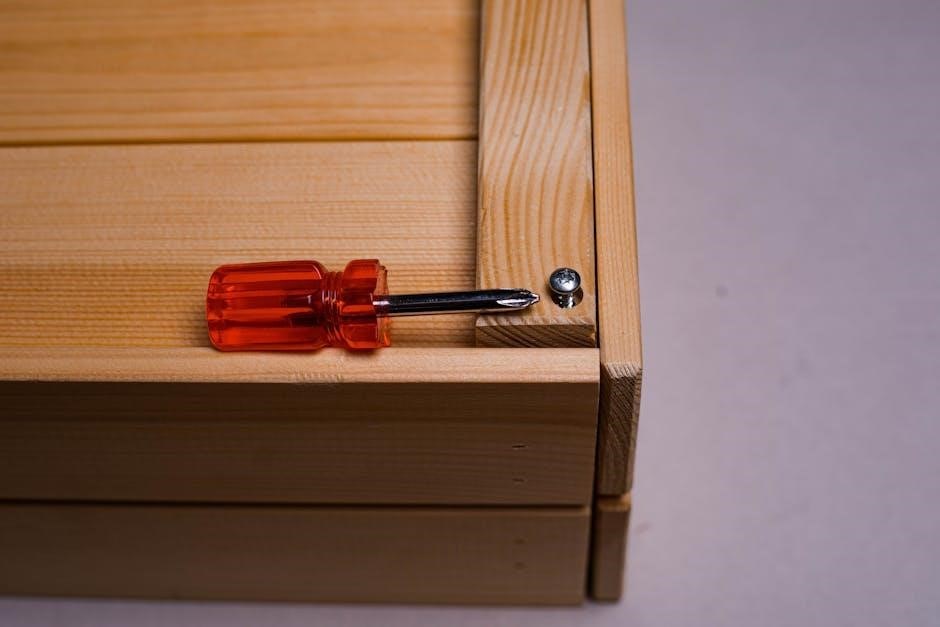
Installation Process
The installation process involves unpacking, handling, and placing the TEM6 air handler, followed by connecting electrical components and installing field-accessories, ensuring compliance with safety guidelines․
3․1 Unpacking and Handling the Air Handler
Unpacking and handling the TEM6 air handler requires care to prevent damage․ Inspect the unit for any shipping damage and report issues immediately․ Wear protective gear, including gloves and safety glasses, to avoid injury․ Use a dolly or lift to move the air handler, as it can be heavy․ Ensure the unit is placed on a stable, level surface during unpacking; Avoid dropping or impacting the air handler, as this may damage internal components․ Keep the air handler upright to maintain proper internal alignment․ Only authorized personnel should handle the unit, following all safety precautions outlined in the manual․

3․2 Mounting and Placement Options
The TEM6 air handler offers flexible mounting and placement options to suit various installation environments․ It can be installed in a closet, utility room, alcove, basement, crawlspace, or attic․ Ensure the unit is placed on a level, stable surface to maintain proper operation․ For wall-mounted installations, use sturdy brackets and ensure the structure can support the unit’s weight․ Proper drainage must be considered to prevent water accumulation․ The air handler should be positioned to allow adequate airflow and easy access for maintenance․ Always follow local building codes and manufacturer recommendations for placement and mounting to ensure safety and efficiency․
3․3 Connecting Electrical Components
Connecting electrical components for the TEM6 air handler requires careful attention to safety and proper procedures․ Ensure the power supply is turned off before starting any connections․ Verify the electrical ratings of the unit match the supply voltage and current․ Connect the wires according to the wiring diagram provided in the manual, ensuring all terminals are securely fastened․ Field-installed accessories, such as electric resistance heaters, must be connected as specified․ Always follow local electrical codes and manufacturer recommendations to avoid hazards․ After completing connections, test the system to ensure proper operation and safety․ Proper electrical connections are critical for efficient and safe system performance․ Use appropriate tools and protective equipment when handling live electrical components;
3․4 Installing Field-Installed Accessories
Field-installed accessories, such as electric resistance heaters or UV lamps, enhance the functionality of the TEM6 air handler․ Follow the manufacturer’s instructions for each accessory, ensuring compatibility with the unit․ Before installation, refer to the manual for specific guidelines and wiring diagrams․ Turn off the power supply to the air handler before installing any accessories․ Securely mount and connect the accessories, adhering to local electrical codes and safety standards․ After installation, test the system to ensure proper operation․ Properly installed accessories improve system performance and efficiency․ Always use genuine or recommended parts to maintain warranty validity and system reliability․ Safety and compliance are paramount during this process․
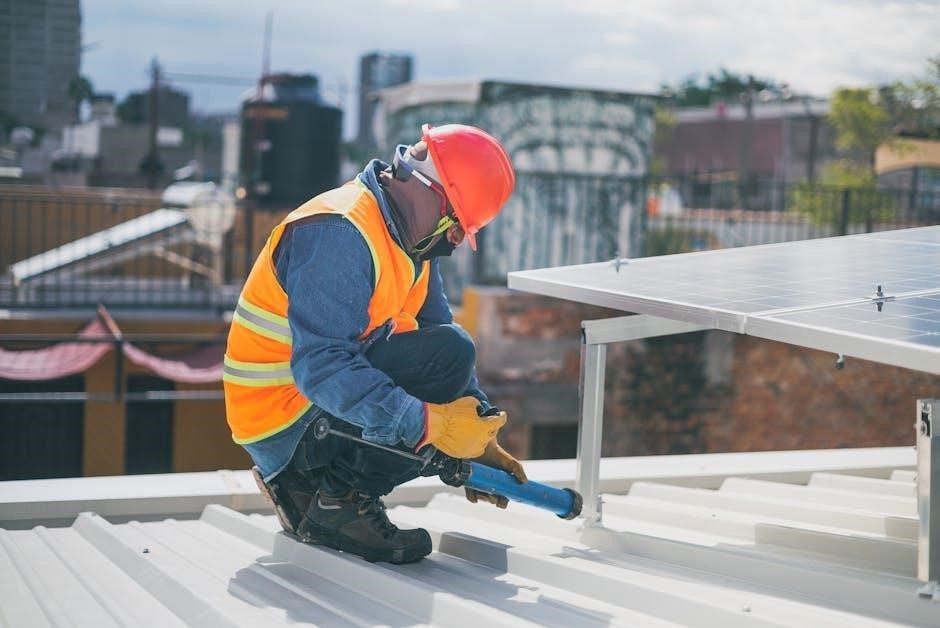
Testing and Commissioning
Testing and commissioning ensure the TEM6 air handler operates efficiently and safely․ Verify electrical connections, airflow, and temperature settings․ Conduct performance checks under various operating modes to confirm proper function․
4․1 Initial System Testing
Initial system testing ensures the TEM6 air handler operates correctly after installation․ Begin by verifying all electrical connections are secure and meet specifications․ Turn on the power and check for proper system startup․ Verify thermostat settings and ensure the unit responds to temperature adjustments․ Test all operating modes, including cooling, heating, and fan-only, to confirm functionality․ Check airflow through vents to ensure even distribution and adequate pressure․ Verify that the system operates quietly and without unusual vibrations․ Perform a leak test on refrigerant lines if applicable․ Document any issues and address them before proceeding to further testing․ Ensure compliance with manufacturer guidelines for accurate results․
4․2 Checking System Performance
After initial testing, check the system’s performance to ensure optimal operation․ Verify temperature accuracy by comparing setpoint and actual readings․ Assess airflow by measuring duct pressure and ensuring balanced air distribution․ Check energy efficiency by monitoring power consumption and comparing it to manufacturer specifications․ Inspect condenser coils and air filters for cleanliness, as they impact performance․ Ensure all electrical components, such as capacitors and contactors, function correctly․ Monitor system operation under different loads to identify potential issues․ Document performance metrics and compare them with benchmarks․ Address any deviations promptly to maintain efficiency and reliability․ This step ensures the system meets design specifications and operates effectively in its environment․
4․3 Final Adjustments and Settings
After commissioning, perform final adjustments to optimize system performance․ Check and calibrate temperature sensors, ensuring accurate readings․ Adjust airflow to meet design specifications, balancing supply and return airflows․ Verify thermostat settings and programmable features for proper operation․ Fine-tune electrical connections, confirming correct voltage and phase configurations․ Ensure all safety and operational parameters are within manufacturer guidelines․ Test system operation under various modes, such as heating, cooling, and fan-only, to confirm smooth transitions․ Document all final settings for future reference․ These adjustments ensure the system operates efficiently, reliably, and safely, meeting the homeowner’s comfort and energy-saving expectations․
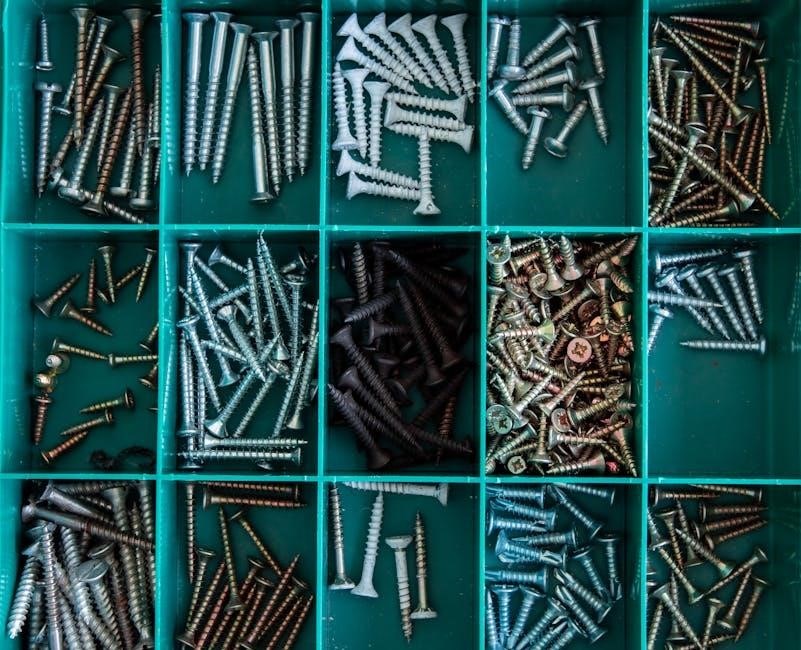
Maintenance and Troubleshooting
Regular maintenance ensures optimal performance․ Clean filters, inspect coils, and check electrical connections․ Troubleshoot common issues like airflow problems or error codes, referencing the manual for solutions․
5․1 Routine Maintenance Requirements
Regular maintenance is crucial for optimal performance․ Clean or replace air filters every 1-3 months to ensure proper airflow․ Inspect and clean evaporator coils annually to prevent dust buildup․ Check electrical connections for tightness and integrity․ Ensure all drain lines are clear to prevent water damage․ Lubricate fan motors as recommended by the manufacturer․ Verify thermostat settings and calibrate if necessary․ Replace worn-out belts or pulleys to maintain efficiency․ Schedule professional servicing every 6-12 months for comprehensive system checks․ Always refer to the manual for specific maintenance instructions tailored to your TEM6 model․
5․2 Common Issues and Troubleshooting
Common issues with the TEM6 series air handler include improper installation, electrical malfunctions, and restricted airflow․ If the system fails to start, check power supply and circuit breakers․ For uneven cooling, ensure proper insulation and duct sealing․ Leaks or water damage may indicate clogged drain lines, which require immediate cleaning․ Strange noises could signal loose belts or debris in the unit․ Always refer to the manual for diagnostic procedures․ If issues persist, contact a certified technician to avoid further damage․ Regular maintenance and adherence to manufacturer guidelines can prevent many of these problems and ensure efficient system operation․
5․3 Resetting and Restarting the System
To reset the TEM6 air handler, first ensure the system is powered off at the circuit breaker or main electrical panel․ Allow the system to remain off for 30 seconds to reset internal controls․ Turn the power back on and check for proper operation․ If issues persist, verify the thermostat settings and ensure all electrical connections are secure․ For complex problems, consult the troubleshooting guide or contact a certified technician․ Regular system resets can help maintain efficiency and prevent unexpected shutdowns․ Always follow safety guidelines when working with electrical components to avoid potential hazards․
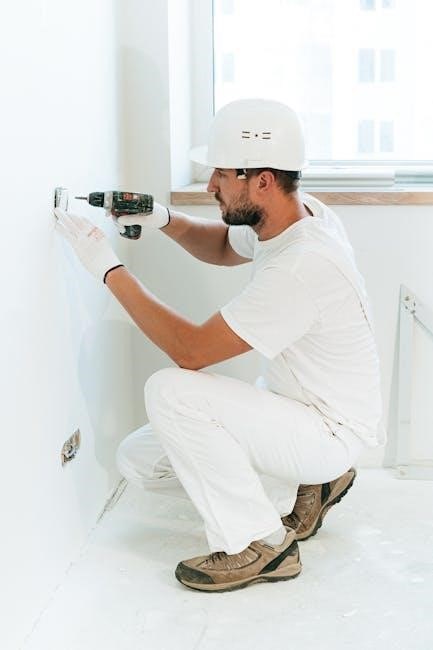
Warranty and Compliance Information
Understand the warranty terms for your TEM6 air handler, ensuring compliance with local regulations and manufacturer recommendations for proper installation and maintenance to uphold warranty validity․
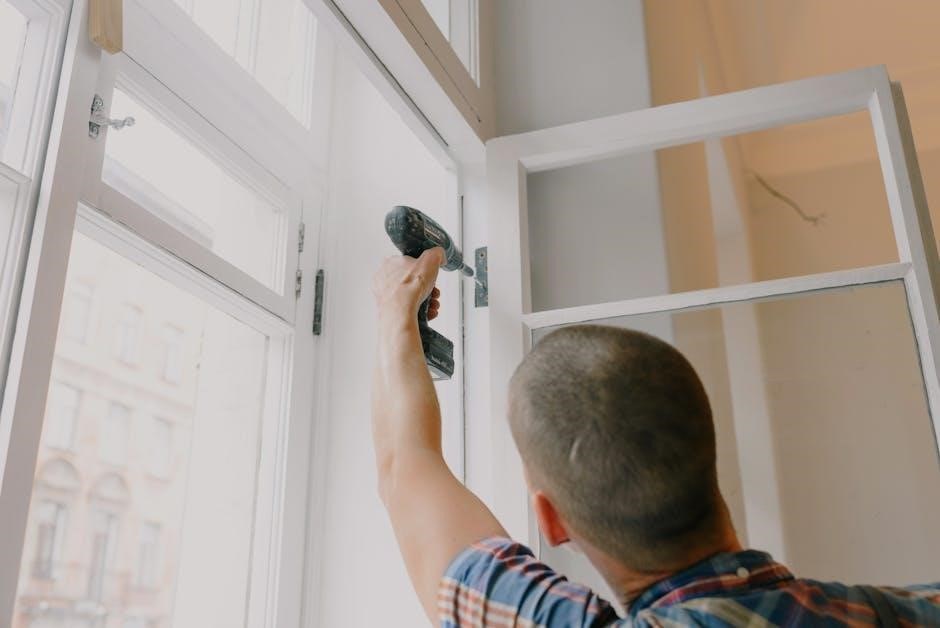
6․1 Understanding Warranty Terms
The TEM6 air handler warranty provides coverage for manufacturing defects, ensuring reliable performance․ Warranty terms vary by model and typically include parts and labor for a specified period․ Proper installation by certified professionals is essential to maintain warranty validity․ Homeowners must register their unit and adhere to routine maintenance requirements to ensure coverage․ The warranty does not cover damages from misuse, improper installation, or failure to maintain the system․ Always review the manual and manufacturer’s website for specific details on warranty duration, conditions, and exclusions․ Understanding these terms helps maximize protection and ensures compliance with manufacturer recommendations for your TEM6 air handler․
6․2 Compliance with Local Regulations
Compliance with local regulations is crucial for the safe and legal installation of the TEM6 air handler․ Ensure all installation practices meet local building codes, safety standards, and environmental regulations․ The manual provides guidelines to help installers adhere to these requirements, but it is the responsibility of the installer to verify and comply with specific local laws․ Non-compliance can result in penalties or system inoperation․ Always consult local authorities or certified professionals to confirm that the installation meets all applicable regulations․ Proper compliance ensures safety, efficiency, and avoids potential legal issues, making it a critical step in the installation process․
6․3 Manufacturer Recommendations
Manufacturer recommendations are essential for ensuring the TEM6 air handler operates safely and efficiently․ Always follow the installation manual’s guidelines to meet safety and efficiency standards․ The manufacturer emphasizes that only qualified personnel should perform the installation to avoid potential hazards․ Specific instructions are provided for field-installed accessories, such as electric resistance heaters and TXV kits, to ensure proper functionality․ Adhering to these recommendations guarantees optimal system performance and compliance with local regulations, preventing potential issues and ensuring warranty validity․ Proper installation, as outlined by the manufacturer, is critical for the reliability and longevity of the TEM6 series air handler․
The TEM6 installation manual provides comprehensive guidance for safe, efficient, and compliant installation․ Adhering to these guidelines ensures optimal performance, longevity, and warranty compliance of your air handler system․
7․1 Summary of Key Installation Steps
Proper installation of the TEM6 series air handler involves several critical steps․ Begin by selecting a suitable location, ensuring compliance with safety and space requirements․ Unpack and inspect the unit for damage, verifying the model and serial number match your order․ Prepare the site by leveling the floor and ensuring proper drainage․ Connect electrical components carefully, following the manual’s wiring diagrams․ Install any field-accessories as required․ Conduct thorough testing to ensure system performance meets specifications․ Finally, perform routine maintenance to guarantee long-term efficiency and reliability․ Adhering to these steps ensures a safe, efficient, and compliant installation, maximizing the system’s performance and lifespan․
7․2 Final Safety and Efficiency Considerations
Ensure all electrical connections are secure and properly grounded to avoid hazards․ Regularly inspect and clean filters to maintain airflow and system efficiency․ Verify that all safety features, such as emergency shut-offs, are functioning correctly․ For optimal performance, ensure proper insulation and sealing of ducts to prevent energy loss․ Schedule routine maintenance to check refrigerant levels, coils, and fans․ Always follow the manufacturer’s recommendations for system settings and operation․ Properly dispose of packaging materials and unused components․ By prioritizing safety and efficiency, you can ensure reliable operation, energy savings, and a longer system lifespan․ Compliance with local regulations is also essential for safe and efficient operation․
